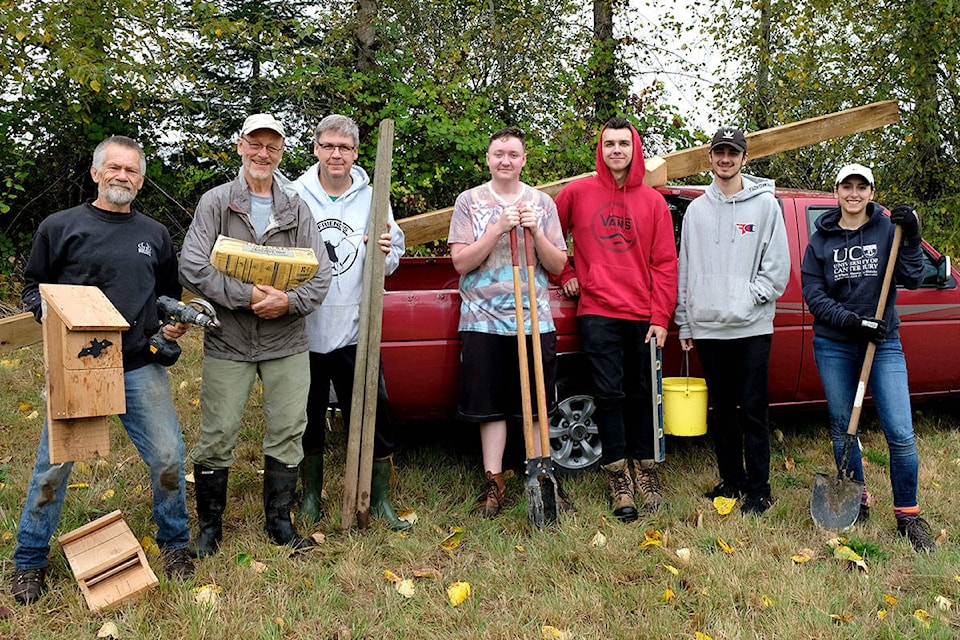Langley Field Naturalists (LFN) have turned their attention to bats this fall, erecting four towers topped with a nesting box so the winged critters have a safer place to call home.
At the beginning of the year, LFN members determined Brae Island Park, Brydon Lagoon, Derick Doubleday Arboretum, and the Forsland Watson Nature Reserve were some of the best locations to establish nesting boxes because of high bat activity.
Ryan Usenik, a member of LFN for more than 10 years, helped spearhead the project after seeing their natural nesting areas decrease.
“As we slowly destroy their natural nesting sites, there is an increased need for properly constructed nesting boxes as an alternative for their use,” said Usenik.
“The advantage of properly constructed bat housing is for the bat’s safety. Like all animals they have predators, but if they can find suitable, safe resting sites, the population is going to be able to survive.”
Bats contribute significantly to the ecosystem by eating insects and pollinating various plant species. Usenik said most of them, typically male, tend to live alone and make nests out of dead trees and hollow bark – development and human activity have made them adapt to different types of spaces overtime.
“Since there isn’t much old growth anymore, bats have adjusted to making their nests in buildings – barns and older structures,” Usenik explained. “People may not know bats are even living in these spaces and when they do, they want to displace them.”
Usenik encouraged people who do wish to get them out of a building, to displace them during the fall before hibernation. Now, with the addition of the bat boxes, LFN members hope most bats won’t have to be displaced at all.
Read More: Butterfly brochure lands in Langley
“The boxes are made out of Cedar wood because it is softer and easier for the bats to hang on to. You want an entryway that’s three quarters of an inch because bats prefer a tight point of entry,” Usenik said.
“You have to make sure there’s a proper ramp that they can land on. The boxes must always face east or south to take advantage of the sun, but not west as it gets too hot for bats if facing that direction.”
The nesting boxes stand atop 20 ft poles to keep them high above predators and human activity.
For more information on LFN, people are encouraged to visit their website or email any questions to langleyfieldnaturalists@shaw.ca.
Usenik said he knew little about bats before joining LFN, but noted that getting to learn from other people is one of the best aspects of being part of the Field Naturalist group.
_________________________________
Is there more to this story?
Email: ryan.uytdewilligen@langleyadvancetimes.com
Like us on Facebook or follow us on Twitter
_________________________________
